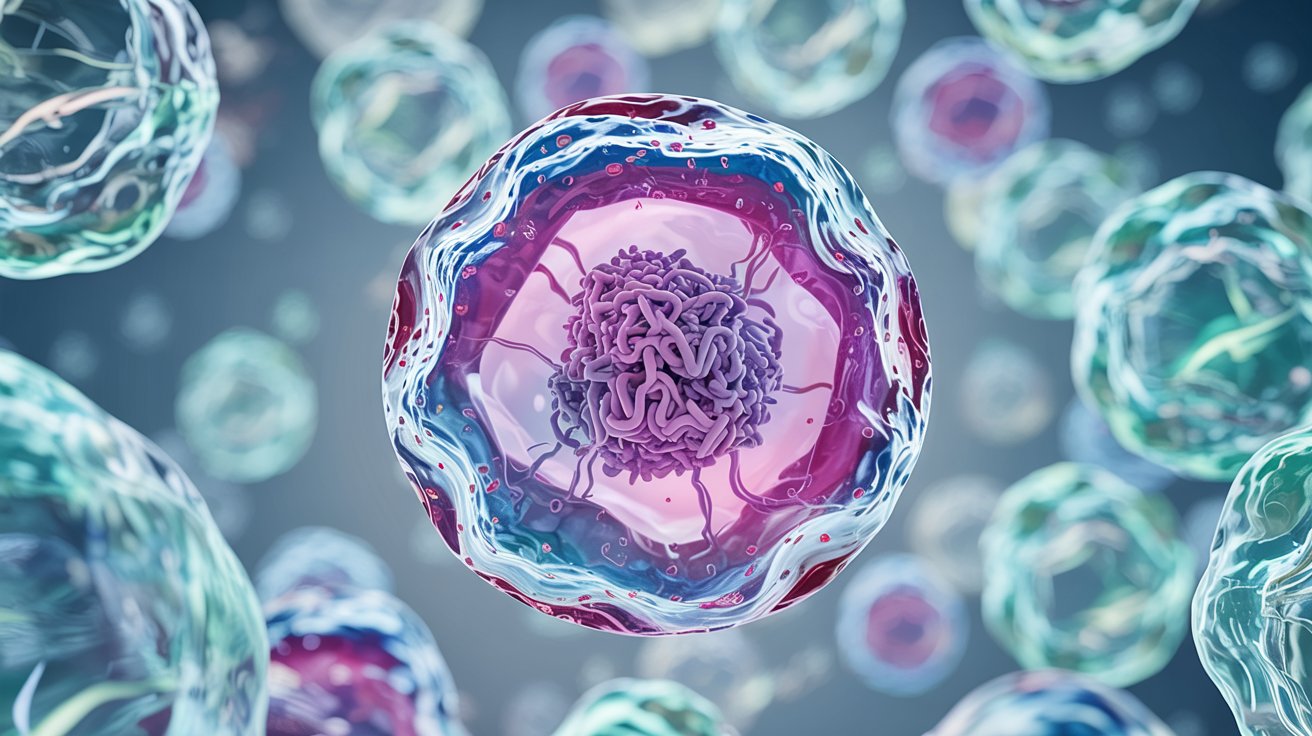
Ever wondered what the nucleolus does inside a cell? This tiny structure, found within the nucleus, plays a huge role in making ribosomes, which are essential for protein production. Without ribosomes, cells can't function properly. The nucleolus is like a factory, assembling the parts needed for ribosomes. It’s fascinating how something so small can be so important. Did you know the nucleolus can change size depending on how active a cell is? When a cell is busy making proteins, the nucleolus grows larger. Ready to learn more? Here are 31 facts about the nucleolus that will blow your mind!
What is the Nucleolus?
The nucleolus is a small, dense structure found within the nucleus of eukaryotic cells. It plays a crucial role in producing and assembling ribosomes. Let's dive into some fascinating facts about this tiny but mighty cellular component.
- The nucleolus is not surrounded by a membrane, unlike the nucleus itself.
- It is primarily composed of RNA and proteins.
- The nucleolus is the site of ribosomal RNA (rRNA) synthesis.
- It assembles ribosomal subunits, which are essential for protein synthesis.
- The size of the nucleolus can vary depending on the cell's activity level.
- Cells with high protein synthesis rates often have larger nucleoli.
- The nucleolus was first identified by the Italian scientist Felice Fontana in 1774.
Structure of the Nucleolus
Understanding the structure of the nucleolus helps us appreciate its function. It consists of several distinct regions, each with specific roles.
- The nucleolus has three main regions: the fibrillar center, the dense fibrillar component, and the granular component.
- The fibrillar center contains DNA that encodes rRNA.
- The dense fibrillar component is where rRNA transcription occurs.
- The granular component is where ribosomal subunits are assembled.
- The nucleolus can be seen under a light microscope due to its dense nature.
- It appears as a dark spot within the nucleus when stained.
Functions of the Nucleolus
The nucleolus is not just a static structure; it is a hub of activity within the cell. Its primary functions revolve around ribosome production and assembly.
- The nucleolus is responsible for producing 60% of the cell's RNA.
- It plays a role in the cell's response to stress.
- The nucleolus can regulate the cell cycle by interacting with proteins involved in cell division.
- It is involved in the assembly of signal recognition particles, which are crucial for protein targeting.
- The nucleolus also participates in the modification of small nuclear RNAs (snRNAs).
Nucleolus in Different Organisms
The nucleolus is a universal feature in eukaryotic cells, but its characteristics can vary across different organisms.
- Plant cells often have more prominent nucleoli compared to animal cells.
- In yeast, the nucleolus occupies a significant portion of the nucleus.
- Some single-celled organisms, like amoebas, have multiple nucleoli within a single nucleus.
- The nucleolus in frog oocytes is exceptionally large, aiding in the study of its structure and function.
Nucleolus and Disease
The nucleolus is not just a cellular workhorse; it can also be a marker for certain diseases. Changes in its structure and function can indicate underlying health issues.
- Alterations in nucleolar size and shape are often observed in cancer cells.
- Nucleolar hypertrophy (enlargement) is a common feature in rapidly growing tumors.
- Certain genetic disorders, like Treacher Collins syndrome, are linked to defects in nucleolar function.
- Viral infections can hijack the nucleolus to enhance viral replication.
- The nucleolus is a target for some anti-cancer drugs, which aim to disrupt ribosome production.
Interesting Tidbits About the Nucleolus
Beyond its scientific importance, the nucleolus has some intriguing aspects that make it a subject of fascination.
- The nucleolus can disassemble and reassemble during the cell cycle, particularly during mitosis.
- It is sometimes referred to as the "ribosome factory" of the cell.
- The number of nucleoli within a nucleus can vary; some cells have multiple nucleoli.
- Research on the nucleolus has provided insights into fundamental biological processes and potential therapeutic targets.
The nucleolus, though small, plays a pivotal role in cellular function and health. Understanding its structure, function, and significance can provide valuable insights into the inner workings of cells.
The Nucleolus: A Tiny Powerhouse
The nucleolus might be small, but it's a powerhouse within the cell. It plays a crucial role in ribosome production, which in turn is essential for protein synthesis. Without it, cells wouldn't function properly, and life as we know it wouldn't exist. This tiny structure is involved in cell cycle regulation, stress responses, and even aging. Scientists continue to study the nucleolus to uncover more of its secrets, which could lead to breakthroughs in medicine and biotechnology. Understanding its functions helps us appreciate the complexity and efficiency of cellular processes. So next time you think about the cell, remember the nucleolus and its mighty contributions. It’s a reminder that even the smallest parts can have a big impact.
Was this page helpful?
Our commitment to delivering trustworthy and engaging content is at the heart of what we do. Each fact on our site is contributed by real users like you, bringing a wealth of diverse insights and information. To ensure the highest standards of accuracy and reliability, our dedicated editors meticulously review each submission. This process guarantees that the facts we share are not only fascinating but also credible. Trust in our commitment to quality and authenticity as you explore and learn with us.
